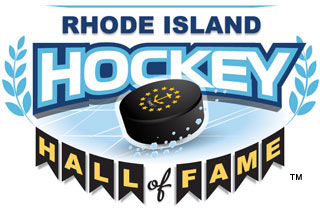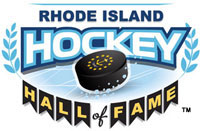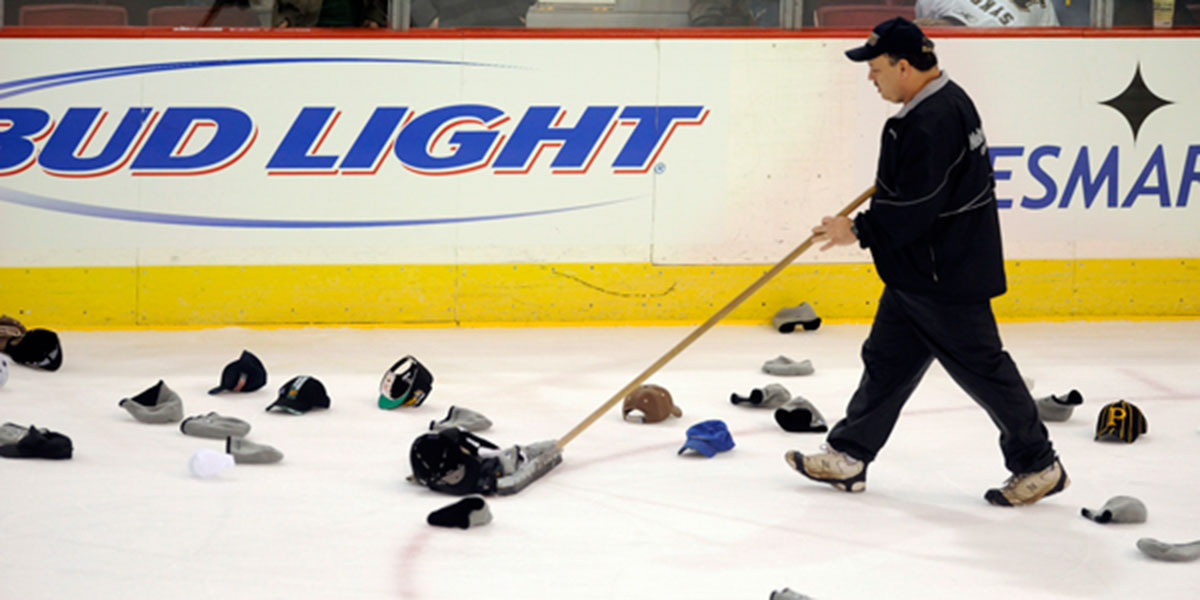If you were entertaining a visitor from Mars and brought your visitor to a hockey game, how would you explain all those hats thrown onto the ice by fans in the crowd after a player scores three goals in the game?
Admit it, the hockey hat trick is an action that requires some explanation for those unfamiliar with the sport. Otherwise, it just looks like a lot of people suddenly angered by their headgear.
The Hockey Hall of Fame in Toronto has settled on this as the “official” history of the hat trick: In January 1944, a Chicago Blackhawks winger named Alex Kaleta stopped by a Toronto haberdashery before a game against the Maple Leafs. He spotted a fashionable grey fedora with a silk band around its top. Even though the hat was on sale, Kaleta didn’t have enough money to buy it. He had just recently returned to pro hockey after serving in World War II with the Canadian military and cash had been tough to come by.
When he explained his plight, Sammy Taft (the haberdasher) offered him a special deal. If he could score three goals that night against the Leafs he could return to the store and the hat would be his, free of charge. It may have seemed like a safe offer; the Maple Leafs were the defending Stanley Cup champions and the Hawks had finished fifth in the standings and missed the playoffs.
Kaleta wasn’t a big star. His NHL career began in 1941 with Chicago and he netted just 7 goals in 37 games as a rookie. Then he went to war and was away from the game for three seasons. So, the odds seemed clearly against Kaleta leaving Toronto after the game with that grey fedora.
But Kaleta fooled both the oddsmakers and the haberdasher by meeting the required number of goals that night. In fact, he scored four times though his team lost to Toronto 6-5. Kaleta returned to Chicago with a new topper atop his top. He also went on to a solid 7-season NHL career with the Blackhawks and Rangers, scoring 92 goals in 382 games including 24 in 1946-47.
The Toronto haberdasher lost a fedora but he gained so much good publicity that he decided to continue his offer of a free hat to any player scoring 3 goals in a game at the iconic Maple Leaf Gardens. As time passed, the Toronto hat trick caught on, was passed from haberdashers to fans, and became a widely recognized part of the culture of the game of hockey wherever it is played.
More Hat Trick History
The Hockey Hall of Fame may have the “official” history of the hat trick, but there are other versions of when, where and how the now-popular 3-goal custom began.
Some credit a different hat shop, one named Henri Henri located in Montreal. Henri Henri had been in the hat-making business since 1932 and, in the early 1940s, began handing out hats to commemorate three-goal performances at that city’s historic Forum hockey palace.
Others claim the practice began in the Canadian city of Guelph in 1947 and was sponsored by Biltmore Hats, for a team affectionately known as “Guelph Biltmore Mad Hatters,” then affiliated with the New York Rangers. The hat maker awarded chapeaus to three-goal scorers in a marketing campaign to promote new styles of headgear.
Most agree that the hat trick terminology didn’t start with hockey, but with a different sport – cricket. Well-known in many parts of the world but still foreign in America, cricket began using the term as far back as 1858 in recognition of a bowler who has taken three wickets in three successive deliveries. Cricket historians say it all began when fans were so impressed with such a feat accomplished by a player named H.H. Stevenson that they took up a collection and used the money to buy him a new hat. Why old H.H. (aka Heathfield Harman) was in dire need of a new hat isn’t clear.
Hat Trick Records
Who scored the most hat tricks in NHL history? Does that question really need to be asked? The answer, of course, is Wayne Gretzky who set just about every scoring record in the game. The Great One did it 50 times.
In second place among NHL players (no surprise here either) is Mario Lemieux who turned the trick 40 times. Among local favorites, Bobby Orr registered 9 hat tricks, not previously the kind of thing a defenseman would or could do. Former RI Reds star Camille Henry had 6 NHL hat tricks after leading the American Hockey League in goals with 50 in our home team’s 1955-56 Calder Cup championship. Another favorite of Boston Bruins fans, Cam Neely, had a dozen three-goal games.
The fastest NHL hat trick was recorded by Bill Mosienko of the Chicago Blawkhawks who put 3 pucks in the net in just 21 seconds in a 1952 game. Mosienko played for the Reds in Providence in 1940-41, early in a long career topped by 14 seasons in Chicago.
Mosienko broke the NHL record for fast hat tricks set by Carl Liscombe, another former RI Reds star who scored three goals in one minute and 52 seconds while playing in the NHL for the Detroit Red Wings in 1938.
Yet another Reds star, Jim Bartlett, also set a quick-goals record in the AHL when he put two pucks in the back of the net in just 5 seconds. That came in 1958 during a 25-goal season for Bartlett, recently elected to the AHL Hall of Fame. (The Winter 2017 issue of 1111 Echoes, the RI Reds Heritage Society newsletter, has details of the Mosienko-Liscombe-Bartlett scoring sprees.)
The first NHL hat trick was scored, retrospectively, by Harry Hyland who tricked the opposing goaltender three times on December 19, 1917 for the Montreal Wanderers. Because his scoring outburst came so early in hockey history, long before hat-trick rituals were established, Harry likely went home hatless.
In recent years there have been about 70 Hat Tricks per season in the NHL during which about 1,230 games are played. The three-goal specials are more frequent in the lower leagues.
Gordie Howe Hat Trick
The legendary Gordie Howe earned his “Mr. Hockey” moniker in several ways. He had the ability to score goals, assist on goals scored by others (many of them by his fellow Hall of Fame linemate Ted Lindsay) and also, when necessary, fight.
So it’s only natural that the media, fans and other players established the “Gordie Howe Hat Trick” for any time a player scores a goal, adds an assist and gets into a fight, all in the same game.
According to the Society for International Hockey Research, the career leader for the most Howe hat tricks is Rich Tocchet who did it 18 times during a like number of NHL seasons with six teams. Runner-up is Brendan Shanahan who later, ironically, would be in charge of discipline in the NHL. He is tied at 17 with Brian Sutter, often referred to as “the Utter Sutter Brutter” in recognition of the many players named Sutter in the NHL.
Among the game’s greats, Bobby Orr had 8 “Gordie Howe Hat Tricks,” Cam Neely, Sidney Crosby and Eric Lindros 6 each, and Zdeno Chara and Wayne Getzky 1 each.
The very first “Gordie Howe Hat Trick” was registered by Hall of Famer Harry Cameron of the Toronto St. Pats way back in 1920. Since he did that 8 years before Gordie Howe was even born, Cameron’s recognition is strictly posthumous.
Ironically, Gordie Howe himself isn’t among the leaders on the “Gordie Howe Hat Trick” list. He accomplished it only twice, in 1953 and 1954, both times against Toronto. The first time, his evening was capped by a fight with Fernie Flaman. Later a player, coach and general manager of the RI Reds, Flaman was a Hall of Fame defenseman so proficient with his fists that few dared to fight him. Eventually, Howe earned a similar reputation, one of the reasons he had so few “Gordie Howe Hat Tricks.” Most players didn’t even think of fighting “Mr. Hockey.”
It’s Not Always Hats
Hats have become the acceptable item for fans to toss on the ice to salute a player’s 3-goal performance. It’s so much a part of the game that NHL (and other levels of the game) does not require a delay of game penalty be accessed against the home team to discourage, and penalize, it.
But, some other things had been hurled from the crowd, too, though the NHL generally discourages anything but hats.
In Detroit, for example, fans often toss octopi onto the ice. That strange custom began during a 1952 playoff game when a Red Wings fan threw one of the sea creatures iceward. The connection? These cephalopods have eight tentacles, each representing one of the eight wins the home team needed to win the Stanley Cup back then. Detroit swept to the title, beating Toronto in four straight, then Montreal by the same margin. That was eight straight wins. Since then it has rained octopi in Joe Louis Arena and the new Little Caesars Arena, which replaced it.
Florida Panthers winger Scott Mellanby killed a rat in the locker room before the 1995 home opener, then scored two goals in the game. The team eventually made it all the way to the Stanley Cup finals before losing to Colorado. But the lucky rat legend remained, then grew into the practice of throwing plastic rats onto the ice after every Panthers goal.
In other venues fans have tossed things like waffles (in Toronto), lobsters (in Boston), hamburgers (in Ottawa) and beef in (Edmonton). The Hockey News adds things like extra pucks, dead gophers, beer bottles to the art of hat-trick tossing. In one venue even a prosthetic leg found its way to the ice.
In Vancouver, an anonymous woman fan tossed her bra onto the ice to celebrate a brief scoring spree (6 goals in 4 games) by team enforcer Jeff Cowan. That brought the defenseman a new nickname “Cowan the Bra-barian.” Eventually, it brought the entire team together to autograph the undergarment, which was then auctioned off to raise money to fight breast cancer.
Where Do Hat Trick Hats Go?
Hat trick hats are eventually picked up and whisked away by arena workers. What happens to all that headgear once it’s off the ice?
In some arenas the hats are offered to the player who scored the hat trick. Some times the player will keep one (or more) as a memento of his momentous moment. What remains are usually headed for the rubbish, since most people have problems with wearing used hats. Sometimes teams will salvage the best of the hats, get them cleaned and donate them to charity.
A few teams like the Columbus Blue Jackets place a huge case in the main concourse of the team’s home arena. It contains every hat tossed onto the ice for hat tricks since the team’s first three-goaler in 2001 (by Geoff Sanderson in a February game).
Double (and Quadruple) Hat Tricks
A few players in NHL history have scored double hat tricks; that is, 6 or more goals in a game. Topping the list is Joe Malone who turned this trick twice. The first was a 7-goal game for the Quebec Bulldogs on January 31, 1920. Then he scored 6 goals on March 10 of the same season.
Brothers Corb and Cy Denneny both had 6-goal games in 1921, the former for Ottawa in January and the latter for Toronto in March. Newsy Lalonde of the Montreal Canadiens had a 6-goal game in 1920.
Syd Howe of Detroit (no relation to Gordie) scored 6 goals on February 1944 (Syd never did have a “Gordie Howe Hat Trick”). Red Berenson had a double hat trick for St. Louis in 1968 and Toronto’s Darryl Sittler is the most recent addition to this lofty list, scoring 6 times in 1976.
Not to be outdone, RI’s own Dick Rondeau still holds the all-time Division 1 collegiate scoring record of 12 goals in a single game (a quadruple hat trick) while playing for national champion Dartmouth in the mid-40s. Amazing.
A Hat Trick Per Game
Phil Latrielle (pronounced La-Tray) didn’t end up as a NHL star but he set goal-scoring records in college hockey that likely will never be broken. During four years at Vermont’s Middlebury College, the Montreal native scored 250 goals in just 91 games, an average of almost a hat trick per game (actually 2.75 goals per game).
As a senior, his booming slap shot put 80 pucks behind goaltenders in 25 games (an average of 3.2 goals per game). That season he also scored a record 10 goals in a single game against Colgate as he led Middlebury to a 19-2 record at a time when college hockey wasn’t set up in divisions, as it is today, and teams like Middlebury took on most of the powers in the East without regard to enrollment.
Latreille had some very talented help during his first two seasons as Middlebury. His center was Mike Karin, a Lake Placid native who set records for 10 assists in a single game and 134 total assists during his 84-game collegiate career. Karin’s records also have withstood the test of time.
Hat Tricks & Other Sports
While hat tricks are part of ice hockey’s culture and likely began in cricket, the term has been applied to other sports, too. Among them are field hockey, lacrosse, water polo, team handball, darts, marbles and poker, though some might question whether the latter three belong on a sports list.
For another popular sport on ice – figure skating – it is now customary to throw stuffed animals on the ice. There’s no hat trick involved, of course. Fans used to throw flowers onto the ice, but officials realized the residue posies might leave on the ice surface could endanger the skaters. So, stuffed animals have been accepted as a benign way for fans to celebrate a skater’s performance.
Hat tricks have even found their way into baseball. It was in Toronto, quite naturally, that fans attempted to get it going, although the practice doesn’t seem to have caught on. Baseball’s culture is already loaded with “3’s” as in three outs and three strikes which, for the team that falls victim to them, receives nothing n the way of celebratory reactions.
Hat Tricks For Purists
Originally, ice hockey hat tricks were defined as three successive goals in a game by the same player. That meant no goals by other players on the game would interrupt the potential hat trick. Over time, however, the word “successive” seems to have been tossed out and three goals in a game, whether consecutive or not, attract celebration.
But what about players who score more than three goals in a game as did the Messrs Malone, Lalonde, Denneny, Howe (Syd not Gordie), Berenson and Sittler previously mentioned? Doesn’t such a feat deserve more than a bunch of hats?
Hat Trick Culture
The term hat trick has earned such wide acceptance that it has become part of the culture. When Eminem won three MTV awards the rapper accomplishment was labeled a musical hat trick by the entertainment media.
For magicians, a hat trick means pulling something like a rabbit or a bouquet of flowers, out of hat, most often a top hat.
The term even has made its way into dessert menus. Ben & Jerry’s developed a flavor they labeled Caramel Hat Trick, described as a “triple threat of caramel ice cream with swirls of caramel and fudge combined with caramel chunks.” Ben & Jerry even promised customers lined up for their scoop or two: “no penalty box for fighting for it.”
Posted by Arnie Bailey


